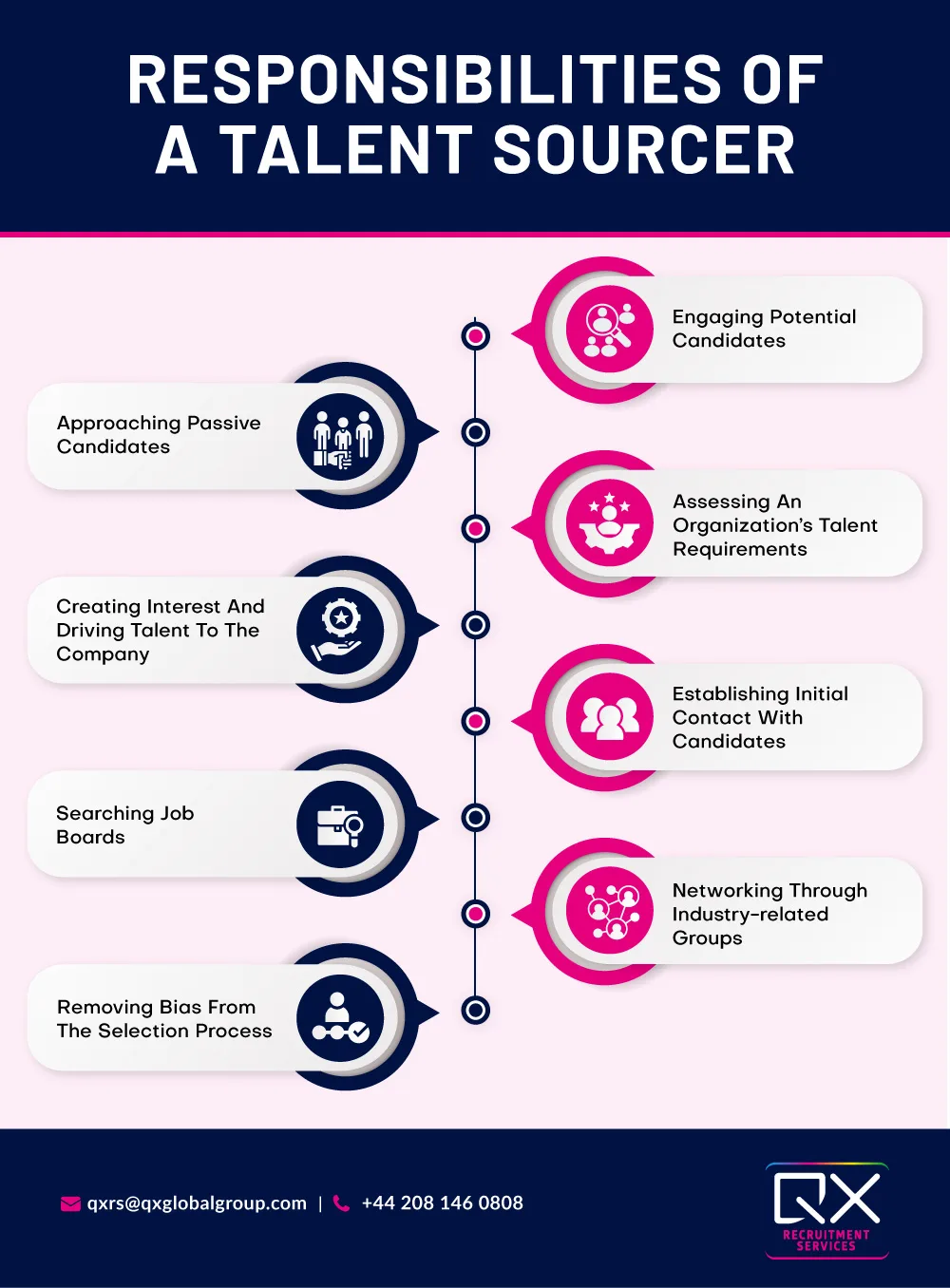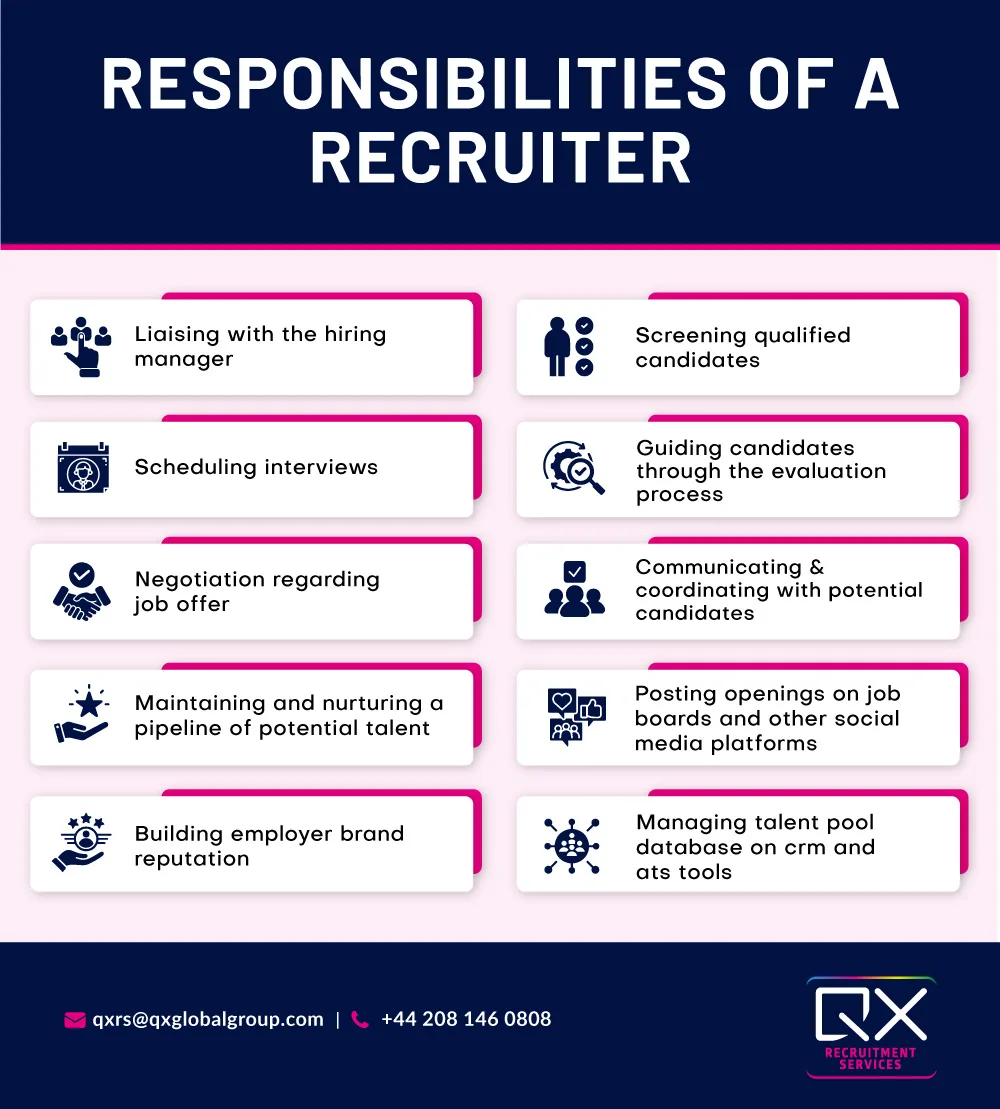Topics: Candidate Sourcing, Recruitment, Sourcing, Talent Acquisition Strategy, Talent Sourcing
Posted on September 18, 2024
Written By Sakshi Sharma

Sourcing and recruitment are related terms often used interchangeably. However, they are not the same and represent different tasks in the hiring process. Although the role of sourcer and recruiter may be carried out by the same person in the hiring team, there is a difference between talent sourcing and recruitment.
Traditionally, recruitment includes the end-to-end process of acquiring new employees. However, this process of acquiring talent has undergone a massive change over the years as the competition to hire top talent increased. There are more jobs and fewer people to hire in the current scenario, resulting in companies adopting specialized talent sourcing strategies in the recruitment process. From identifying potential job applicants to converting them to an employee, the roles of recruiters and sourcers are getting streamlined, well-defined, and highly specialized.
The larger goal for the talent acquisition team remains to fill open positions in an organization with the best-fit candidates to succeed in a workplace. To achieve this goal, talent acquisition leaders need to carefully identify the roles of a sourcer versus a recruiter to optimize the hiring and recruitment process. Sourcers and recruiters need different kinds of technology and people support to accomplish their tasks; hence it is critical to know the difference between sourcing and recruiting.
Simply put, sourcing is the process of finding suitable candidates for a job role and the people who specialize in sourcing activities are termed as ‘sourcers’.
Talent sourcing services involves identifying potential candidates for organizational roles, assessing and engaging them to turn them into potential applicants. As part of the talent sourcing strategy, sourcing focuses on building a consistent talent pipeline of skilled individuals. And as such, the roles for which sourcing is being carried out may not be currently available, resulting in passive candidate sourcing.
Talent sourcers use different technologies and media channels to create interest in open or potential job positions and convince active and passive candidates to apply. The use of social media, job boards, digital channels, and ATS networking sites such as Linked In, Github, and AI Technology have evolved the way sourcers connect with potential applicants to build a talent pool.

Recruiting involves attracting potential candidates, screening, interviewing, and guiding them through the evaluation process. It begins where sourcing ends; once the talent sourcers engage a potential candidate, they hand off the qualified candidate to the recruiters.
A recruiter’s job also includes negotiating offers and onboarding the candidates to an extent in the organization. They manage the relationship going forward and act as liaisons between the candidates and clients or organizations hiring for a role.
Other functions performed by recruiters are administrative tasks such as posting openings on job boards, reviewing and screening applications, scheduling interviews, coordinating with candidates, and satisfying any other client organization needs.

The Society for Human Resource Management (SHRM) outlines the primary difference between sourcing and recruiting as follows: “Sourcing is the proactive searching for qualified job candidates for current or planned open positions; it is not the reactive function of reviewing resumes and applications sent to the company in response to a job posting or pre-screening candidates.”
2. A sourcer’s primary goal is to attract potential talent to the organization and establish initial contact. Talent sourcers are responsible for engaging the candidates in the recruitment process. In comparison, recruiters are responsible for managing the relationship with potential candidates. Recruiters help them navigate through all stages of the recruitment process, including screening, interviews, offer negotiation, and onboarding to facilitate hiring.
3. Sourcers identify qualified candidates using various data mining techniques, research, and data analysis. Sourcers reach out to a larger pool of candidates, locks them, and hand them off to recruiters, who then manage the relationship further.
4. Sourcers and recruiters liaise with the client to handle the recruitment process in different ways. Sourcers first identify the client’s needs and the qualities they seek in a candidate. Based on which sourcers perform targeted research, narrowing down the potential candidates to meet the client’s expectations. On the other hand, recruiters liaise between the client organization and predetermined qualified candidates. They often serve as a proxy for the client until the offer stage of the hiring process.
With the arrival of AI-based specialized technologies to identify, engage, screen, and evaluate talent, the recruitment process has become more complex. It is difficult for a single person to master all these techniques, encouraging the need for separate sourcers and recruiters. Sourcing emerged as a newly developed field of work that helps to optimize the recruitment process through specialization. Sourcing starts early in the full-cycle recruitment process. A recruiter’s role begins where a sourcer’s role ends. Separating sourcing from recruiting has several benefits in terms of improved efficiency and effectiveness of the recruitment process.
Is sourcing taking up too much of your time?
Talent sourcing specialists at QX Global Group, a leading recruitment outsourcing service provider, can help you in sourcing candidates to fill your client’s requirements. QX’s full cycle recruiting services are cost-effective, reduce your hiring time and help you find better-quality candidates.
Book a free consultation to find out how to hire the best talent for your clients.
We hope you enjoyed reading this blog. If you want our team to help you resolve talent gaps, reduce costs and transform your business operations, just book a call.
Originally published Sep 18, 2024 12:09:22, updated Jan 14 2025
Topics: Candidate Sourcing, Recruitment, Sourcing, Talent Acquisition Strategy, Talent Sourcing